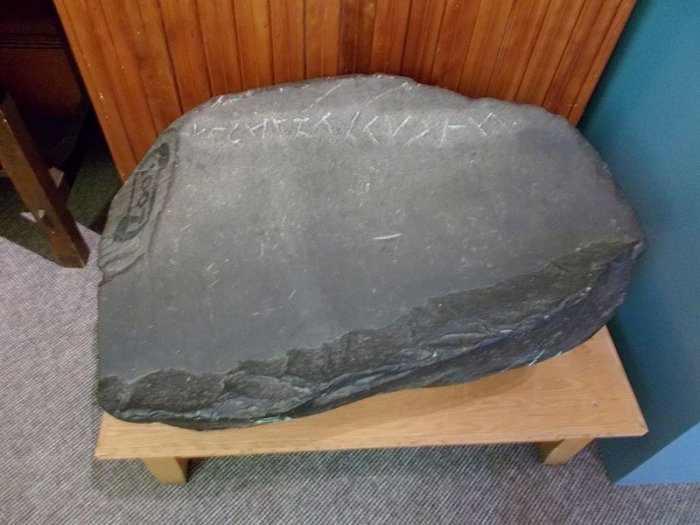Does Yarmouth Runic Stone Describe A Trans-Atlantic Viking Voyage?
Ellen Lloyd - AncientPages.com - In 1812, a Yarmouth doctor, Richard Fletcher stumbled upon a mysterious 400-pound boulder in a salt marsh in the Nova Scotia area, in Canada. The mysterious stone is covered with an inscription consisting of only fourteen characters, but the question remains - who wrote it?
Can the Yarmouth Runic Stone offer evidence Vikings made a Trans-Atlantic journey? Credit: Adobe Stock - Nejron Photo
This particular inscription has puzzled researchers for decades and some believe the characters are Norse runes. Thousands of Norse inscriptions made in stone, wood, and metal have been unearthed, and each item gives us a glimpse into a culture that believed in the power and protection of the gods, telling fortunes and casting spells, and the glory of war.
Readers of Ancient Pages will know that runes, God Odin's secret language played an important role in the lives of the Vikings.
'Calling of Vikings,' by Viktor Vasnetsov Viktor Vasnetsov (1848-1926) - Credit: WikiPaintings - Public Domain
Whether the inscription on the Yarmouth stone, also known as the Fletcher Stone is genuine or not has never been determined. Some think it is nothing but a hoax, while others say it’s just a work of Mother Nature. However, there are also other interpretations that could shed more light on this puzzling inscription.
The Yarmouth Runic Stone is very interesting in the history of Yarmouth. Most people think that it was left by the Vikings — that’s the general theory — but there are lots of other theories. Basically, it was found towards the end of Yarmouth harbor in 1812 by Doctor Fletcher. Some people, notably the descendants of Dr. Fletcher, always felt that he did the carving because he was apparently a practical joker: and his family always felt that he did it. Lots of others have felt that the Vikings left the stone, and it’s been translated a couple of times by various people from the Runes.
One translation was made by Henry Phillips Junior around about 1875, and he felt that the Runes read either ‘Hako spoke to his men’ or ‘Hako’s son spoke to his men,” said Curator, Eric J. Ruff of the Yarmouth County Museum where the stone is preserved and displayed.
The Yarmouth Runic Stone as currently displayed at the Yarmouth County Museum. Credit: Public Domain
Dr. Barry Fell suggested that the Yarmouth inscription could be written in early Basque, reading "Basque people have subdued this land". His theory was based on the possibility that such stones were deliberately set up along the coast to inform other travelers that territory had already been claimed.
Another possibility, as proposed by Elbert E. Esmiol is that we are seeing a precious artifact left by visitors from the Mycenaean civilization, one of the greatest civilizations of Greek prehistory famous for its majestic architecture and imposing monuments.
The Mycenaean civilization which, according to legend, had been ruled by King Agamemnon, the conqueror of Troy, sprang to life suddenly in southern and central Greece in about 1600 BC.
Closeup of the apparent inscription. Credit: Wreck Smurfy/Public Domain
Developing from seemingly nothing, this civilization would grow to prominence and become one of the most dominant civilizations of the Aegean for hundreds of years.
Esmiol proposed that the inscription is in one of the royal Mycenaean alphabets, and reads as follows:
"Exalted Throne: The pure Lions of the royal household sent into the sunset to protect, to seize, and to make a hole in the mighty waters at the summit have been sacrificed - the whole corporate body".
Yet another theory, proposed by John Campbell is that the inscription is in Old Japanese and reads "wabi deka Kuturade bushi goku" - "Katurade, the eminent warrior, has died in peace". According to the Yarmouth County Museum, the Yarmouth stone is real, but the origin of the inscription remains unknown.
Updated on June 23, 2021
Written by - Ellen Lloyd – AncientPages.com
Copyright © AncientPages.com All rights reserved. This material may not be published, broadcast, rewritten or redistributed in whole or part without the express written permission of AncientPages.com
Expand for referencesMore From Ancient Pages
-
 Hindu Monkey God Hanuman May Have Been Homo Erectus – Scientist Says
Hindu Mythology | Mar 3, 2020
Hindu Monkey God Hanuman May Have Been Homo Erectus – Scientist Says
Hindu Mythology | Mar 3, 2020 -
 Melusine: Charming Water Fairy In European Legend About Taboo And Broken Promise
Featured Stories | Jan 2, 2019
Melusine: Charming Water Fairy In European Legend About Taboo And Broken Promise
Featured Stories | Jan 2, 2019 -
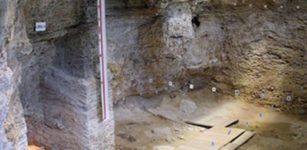 Abric Romaní Cave: New evidence indicates Neanderthals used to heat water some 60,000 years ago
Human Beginnings | Aug 31, 2015
Abric Romaní Cave: New evidence indicates Neanderthals used to heat water some 60,000 years ago
Human Beginnings | Aug 31, 2015 -
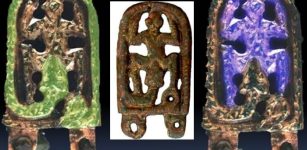 Unique Medieval Bronze Buckle Of A Snake Devouring A Frog-Like Creature Found In Brno, Czech Republic
Archaeology | Dec 13, 2023
Unique Medieval Bronze Buckle Of A Snake Devouring A Frog-Like Creature Found In Brno, Czech Republic
Archaeology | Dec 13, 2023 -
 Warrior King Eadberht Of Northumbria And A Four-Legged Beast Featured On Ancient Coin Discovered The Holy Island
Archaeology | Nov 11, 2021
Warrior King Eadberht Of Northumbria And A Four-Legged Beast Featured On Ancient Coin Discovered The Holy Island
Archaeology | Nov 11, 2021 -
 Mythical Shield-Maidens Did Exist – Evidence Of Female Viking Warriors Discovered
Archaeology | Sep 9, 2017
Mythical Shield-Maidens Did Exist – Evidence Of Female Viking Warriors Discovered
Archaeology | Sep 9, 2017 -
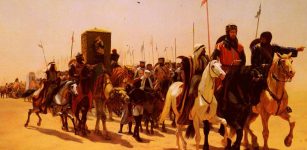 On This Day In History: Richard The Lionheart Ascended The British Throne – On July 6, 1189
News | Jul 6, 2016
On This Day In History: Richard The Lionheart Ascended The British Throne – On July 6, 1189
News | Jul 6, 2016 -
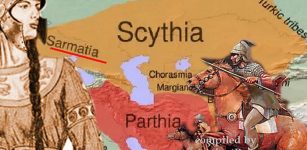 Amage: Sarmatian Warrior Queen/Regent Who Impressed With Remarkable Military Skills
Featured Stories | May 23, 2023
Amage: Sarmatian Warrior Queen/Regent Who Impressed With Remarkable Military Skills
Featured Stories | May 23, 2023 -
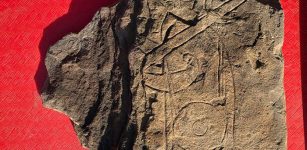 Remarkable Early Medieval ‘Govan Warrior’ Stone Discovered In Glasgow, Scotland
Archaeology | Sep 22, 2023
Remarkable Early Medieval ‘Govan Warrior’ Stone Discovered In Glasgow, Scotland
Archaeology | Sep 22, 2023 -
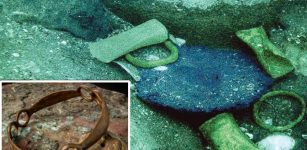 Mystery Of The Amazing 2,500-Year-Old Underwater Rochelongue Treasure
Featured Stories | Jul 7, 2023
Mystery Of The Amazing 2,500-Year-Old Underwater Rochelongue Treasure
Featured Stories | Jul 7, 2023 -
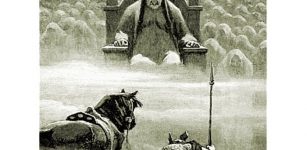 Death Of Norse God Balder And Loki’s Mischief That Led To Destruction In Ragnarok
Featured Stories | Nov 15, 2016
Death Of Norse God Balder And Loki’s Mischief That Led To Destruction In Ragnarok
Featured Stories | Nov 15, 2016 -
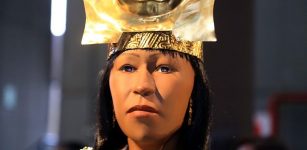 Face Of Queen Lady Cao Reconstructed – Unique Look At The First Known Female Ruler In Peru
Archaeology | Jul 10, 2017
Face Of Queen Lady Cao Reconstructed – Unique Look At The First Known Female Ruler In Peru
Archaeology | Jul 10, 2017 -
 Ancient Mystery Of The Unknown White Bearded Rulers
Civilizations | Apr 21, 2020
Ancient Mystery Of The Unknown White Bearded Rulers
Civilizations | Apr 21, 2020 -
 Cinnabar And Hematite Were Used In Early Teotihuacan Murals – INAH Researchers Say
Archaeology | Aug 5, 2020
Cinnabar And Hematite Were Used In Early Teotihuacan Murals – INAH Researchers Say
Archaeology | Aug 5, 2020 -
 Nalanda – One Of The Most Praised Learning Centers And Masterpiece Of Ancient World
Featured Stories | Aug 24, 2015
Nalanda – One Of The Most Praised Learning Centers And Masterpiece Of Ancient World
Featured Stories | Aug 24, 2015 -
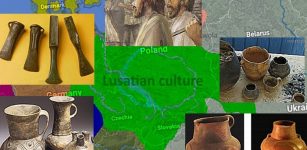 Lusatian Culture: Ancient Traders Of Central Europe Built Strongly Fortified Settlements To Withstand Scythian Attacks
Civilizations | Jan 27, 2024
Lusatian Culture: Ancient Traders Of Central Europe Built Strongly Fortified Settlements To Withstand Scythian Attacks
Civilizations | Jan 27, 2024 -
 The Ebers Papyrus – Most Famous Plant Medicine ‘Encyclopedia’ Of Ancient Egypt
Civilizations | Feb 3, 2016
The Ebers Papyrus – Most Famous Plant Medicine ‘Encyclopedia’ Of Ancient Egypt
Civilizations | Feb 3, 2016 -
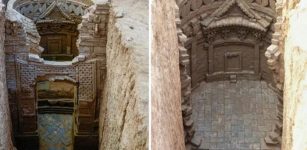 Incredible 700-Year-Old Tombs With Beautiful Decorations And Carved Bricks Found In Shandong, China
Archaeology | May 22, 2023
Incredible 700-Year-Old Tombs With Beautiful Decorations And Carved Bricks Found In Shandong, China
Archaeology | May 22, 2023 -
 Spartacus: The Rise And Fall Of An Unlikely Hero
Featured Stories | Oct 4, 2022
Spartacus: The Rise And Fall Of An Unlikely Hero
Featured Stories | Oct 4, 2022 -
 Wars Of The Roses: Thirty Two Years Of Struggle To Claim English Throne
Featured Stories | Aug 5, 2017
Wars Of The Roses: Thirty Two Years Of Struggle To Claim English Throne
Featured Stories | Aug 5, 2017



